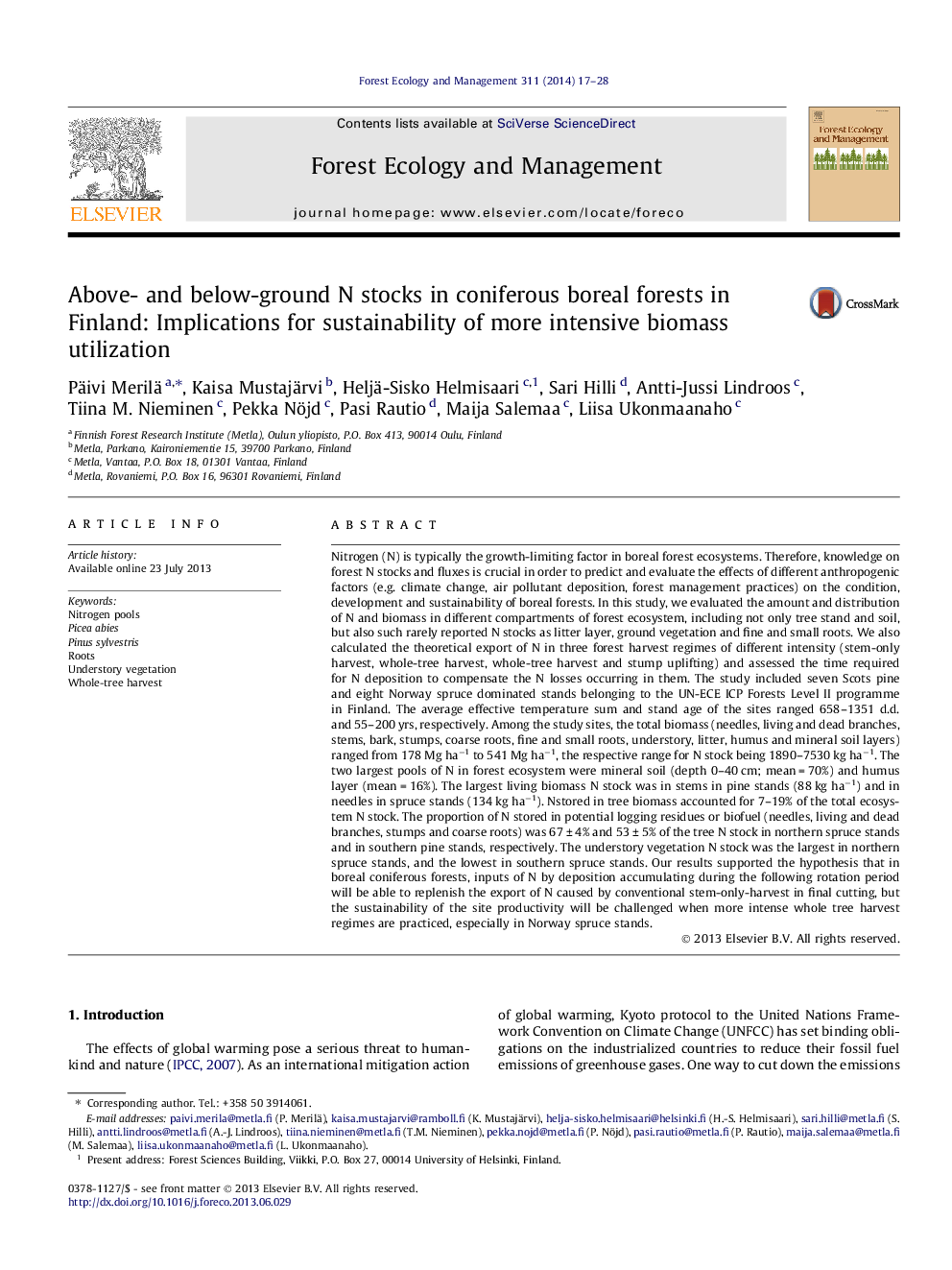| Article ID | Journal | Published Year | Pages | File Type |
|---|---|---|---|---|
| 86700 | Forest Ecology and Management | 2014 | 12 Pages |
•N deposition during rotation period replenished the N export by stem-only-harvest.•N deposition did not compensate the N export by whole-tree-harvest regimes.•The total biomass and N stock ranged 178–541 Mg/ha and 890–7530 kg/ha, respectively.•The largest N pools were 0–40 cm mineral soil profile (70%) and humus layer (16%).•The N stock in potential logging residues (stumps incl.) was 50–71% of tree N stock.
Nitrogen (N) is typically the growth-limiting factor in boreal forest ecosystems. Therefore, knowledge on forest N stocks and fluxes is crucial in order to predict and evaluate the effects of different anthropogenic factors (e.g. climate change, air pollutant deposition, forest management practices) on the condition, development and sustainability of boreal forests. In this study, we evaluated the amount and distribution of N and biomass in different compartments of forest ecosystem, including not only tree stand and soil, but also such rarely reported N stocks as litter layer, ground vegetation and fine and small roots. We also calculated the theoretical export of N in three forest harvest regimes of different intensity (stem-only harvest, whole-tree harvest, whole-tree harvest and stump uplifting) and assessed the time required for N deposition to compensate the N losses occurring in them. The study included seven Scots pine and eight Norway spruce dominated stands belonging to the UN-ECE ICP Forests Level II programme in Finland. The average effective temperature sum and stand age of the sites ranged 658–1351 d.d. and 55–200 yrs, respectively. Among the study sites, the total biomass (needles, living and dead branches, stems, bark, stumps, coarse roots, fine and small roots, understory, litter, humus and mineral soil layers) ranged from 178 Mg ha−1 to 541 Mg ha−1, the respective range for N stock being 1890–7530 kg ha−1. The two largest pools of N in forest ecosystem were mineral soil (depth 0–40 cm; mean = 70%) and humus layer (mean = 16%). The largest living biomass N stock was in stems in pine stands (88 kg ha−1) and in needles in spruce stands (134 kg ha−1). Nstored in tree biomass accounted for 7–19% of the total ecosystem N stock. The proportion of N stored in potential logging residues or biofuel (needles, living and dead branches, stumps and coarse roots) was 67 ± 4% and 53 ± 5% of the tree N stock in northern spruce stands and in southern pine stands, respectively. The understory vegetation N stock was the largest in northern spruce stands, and the lowest in southern spruce stands. Our results supported the hypothesis that in boreal coniferous forests, inputs of N by deposition accumulating during the following rotation period will be able to replenish the export of N caused by conventional stem-only-harvest in final cutting, but the sustainability of the site productivity will be challenged when more intense whole tree harvest regimes are practiced, especially in Norway spruce stands.
